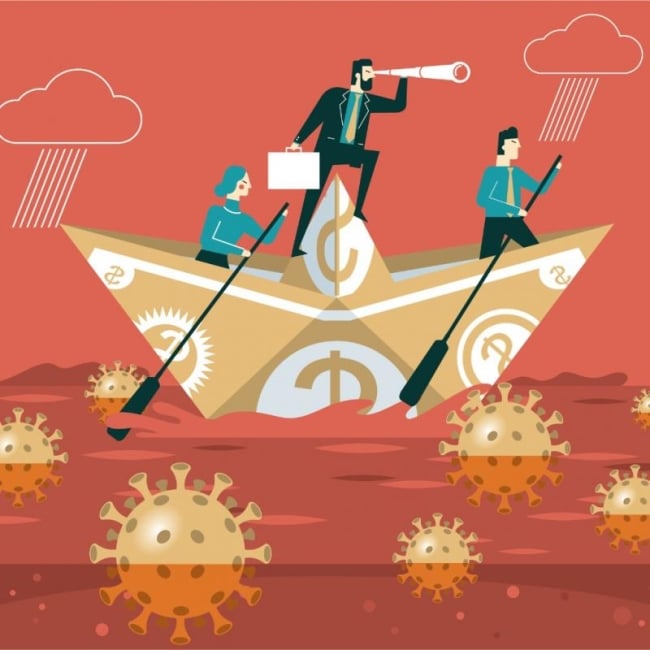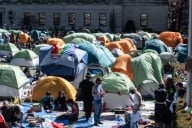You have /5 articles left.
Sign up for a free account or log in.

Istock/sorbetto
Academic leaders across the nation are dealing with what will probably prove to be the most challenging time of their tenures. In the days of COVID-19, the broader consequences of leadership decisions -- for people's health, even their lives, and potentially the future existence of an institution -- have ramped up significantly, especially for provosts and presidents. Those jobs, always lonely, have become even lonelier and more pressured.
We all have never had a stronger imperative to be, in the parlance of the negotiation literature, "hard on the problems and soft on the people." The COVID-19 pandemic and its unprecedented disruptions to the operations of colleges and universities have left academic leaders and members of their communities forced to balance concerns for individual health and safety, budgetary survival, and academic quality and integrity. The decisions around those challenges pose innumerable tensions and tradeoffs that need to be managed in a context that is rapidly changing -- one in which accurate projections even a few weeks into the future are impossible.
A second historic set of challenges has also confronted our academic environments in recent months. The "Black Lives Matter" protests have resurfaced questions about campus inequities, inclusion, campus policing and whether moves made to address one set of problems -- such as moving classes online -- create new disadvantages for members of certain groups.
So much of what will happen in the next weeks and months will turn on how academic leaders make choices and the ways in which they recognize and adapt long-standing but no longer effective behaviors and habits. The very desire for a return to normalcy may result in choices that prove to be counterproductive to supporting the life and vitality of the academic environment leaders wish to preserve.
The profoundly difficult decisions ahead are exacerbated by an external environment in which policy and public health decisions are influenced by partisan political interests. Across the country people -- especially young people -- continue to avoid masks, distancing and other health and safety requirements. The safety of future policies, such as plans to reopen campuses, depend on human behavior and choices that are not always rational. Developments at the national level complicate campus decisions and the future even further.
This uncertainty has led some faculty members and students to oppose reopening campuses. At the same time, not reopening will mean financial crises that will likely entail furloughs and layoffs. Students in many fields will miss crucial educational and professional development experiences. The tradeoffs here are real and excruciating -- and someone needs to make the decisions.
Responsible leadership now entails a significant degree of flexibility and responsiveness to a changing environment. Meanwhile, students, parents and faculty members are demanding greater specificity from college leaders about future plans for reopening campuses than might be feasible. An honest answer to some questions might be, "We just don't know yet." Leaders will need to adapt to changing conditions and to be constantly ready to reverse or change strategies.
Reopening or not, plans are needed, but those plans will certainly have to change and evolve. In a situation that is based on so much uncertainty, clear principles and processes are needed: data-based decisions, meaningful consultation and transparency. Finding a way to the longer term through this dangerous period requires a balance of strategic and tactical choices. In fact, what may be a tactical decision today could significantly limit longer-term strategic options.
What does all this mean for the academic leader in the midst of such a crisis? How do you embrace responsibility and accountability for decisions that will influence the health and well-being of students, faculty, and staff at your institution? What do you do if you make choices that turn out to be wrong? We offer five recommendations.
Focus on core values. Leadership is grounded in creating a vision and guiding others through actions toward achieving that vision. Leaders need, and need to express, distinct and clearly articulated values and pursue mission-critical priorities. In higher education, those priorities include:
- Concern for the safety and health of all members of the community;
- Providing the highest quality educational experience possible to all students;
- Stewardship of resources and working to maintain the financial sustainability of the enterprise;
- Maintaining morale and communicating a shared commitment to working together for the well-being of the whole;
- Being honest and realistic about short-term challenges, while keeping the long-term quality and viability of the institution in view; and
- Transparency in process and decision-making, and including a broad range of stakeholders in that decision-making, especially when one variable is the level of risk people are willing to accept for the sake of getting back to work.
Can you articulate, clearly and concisely, which values are guiding choices now and, as circumstances change, in the future?
Communicate, communicate, communicate. It almost goes without saying, but it can't be said enough: communication is key. That involves:
- Sharing information that is as accurate and complete as possible, including those uncertain elements. For example, "Using currently available information X, Y, Z, we have prioritized safety through these measures (A, B, C) and done all we can to preserve central functions (D, E)."
- Soliciting and listening to feedback from affected constituencies, especially students, faculty and staff. This is a time when people's legitimate fears and anxieties must be heard. Clear communication, in both directions, is essential for maintaining community and morale in a difficult time. At the same time, this also means communicating which decisions, after hearing all sides and considering the implications, have been made. Pleasing everyone is not going to be possible, and inaction is not an option.
- Finding a message that is factual, realistic and forward-looking.
The times do not call for a mere PR campaign: the voice and values of the leader will communicate powerfully.
Provide accessible education. This pandemic will be over one day, and we will probably return to a New Normal in ways that no one can fully predict. The confluence of the virus and the Black Lives Matter protests aims toward a reconfiguration of values -- one in which "safety" takes on many meanings and in which equity and the asymmetrical impact of policies on different groups at the institution are at the forefront.
If campuses do re-open, BLM protests will probably be part of that New Normal. The movement has broadened from a focus on violence toward African Americans, to a re-examination of racial injustice in all its forms. It is building a wider coalition to question who does and does not have access to the America Dream -- including access to quality higher education. It is inevitable that colleges and universities will be confronted with the ways in which they have fallen short.
How do leaders respond to those challenges while also coping with the health, organizational and financial challenges posed by COVID-19? Here again, a commitment to certain values, open communication, an honest assessment of the facts, and careful listening are essential.
Moreover, a key part of the New Normal will be an upsurge in online and blended instruction models, not as a temporary emergency measure but as a continuing effort to provide access to a diverse and global student body. These instructional trends were already underway and have now accelerated, and with them come important questions. Temporarily teaching at a distance on an emergency basis is not the same as fundamentally redesigning a course into online or blended formats. What does it mean to teach in this way, with quality and innovation? Who is best served through these alternative approaches, and who is disadvantaged? (For example, consider students in areas with poor Wi-Fi connectivity or students without support structures at home.) What are some of the broader institutional and budgetary implications of more online teaching -- and who does it?
Establish an environment of excellence. Another aspect of the New Normal will be an acceleration in already existing tendencies for people to teach and work from home. What does that mean for promoting a sense of unity, community and collegiality? What does it mean for evaluating work? What does it mean for educational activities where work must be done in a particular place, and together? What does it mean for formal meetings? As a leader, how do you run an online meeting while ensuring active participation and shared decision-making? Even after the virus is behind us, many of these patterns of activity will persist -- and indeed, we are learning to appreciate some of the ways that some aspects of non-face-to-face practices have their own benefits.
At the same time, true excellence also includes commitments to diversity and inclusion. Every means of expanding access for some may entail challenges to access for others. Good intentions do not guarantee good outcomes for all. We must all pay attention to how our words and actions affect those around us, and take responsibility for doing better when we fall short./p>
Recognize real and often profound impacts. We must be honest and direct about the emotional toll these changes are having on people, including on leaders themselves:
- This pandemic creates in many the real fear that a single moment of unguarded contact could lead to death.
- A large number of employees will experience severe financial repercussions.
- Not all people have the support networks of people at home or online with whom they can work through these feelings. Loneliness is a real problem for some, and physical safety for others.
- For many members of the campus community, the uncertainty of how things will play out and the rapidly changing wider environment have given root to rumors or speculation that exacerbate their anxieties. Are there going to be layoffs? Will efforts to reshape the campus and eliminate certain units (and their faculty) be carried out under the guise of "dealing with the virus"? Are students going to come back in the fall -- which leads to one set of problems -- or are students going to stay away -- which leads to another?
Similar observations apply to the Black Lives Matter movement. Real feelings and experiences must be considered. How things look from a leader's perspective will not always tell you how they appear from those of disparate groups. Passion, anger and fears drive behavior. Groups that have long felt left out or neglected are now demanding attention. Every policy response to the virus must be examined through the lens of differential impact.
Leaders are part of the campus community and suffer from all the same kinds of stresses and anxieties that other people feel -- often more so. They need to care for themselves and build their own networks of personal connection and support. And they must prepare themselves for the inevitability that some of the decisions made today, with the best available information and the best intentions, will turn out later to have been mistaken -- and second-guessed. That has always gone with the territory, and the stakes are higher now. Principled, values-based decisions, communicated in the leader's own authentic voice, are powerful and necessary tools.








